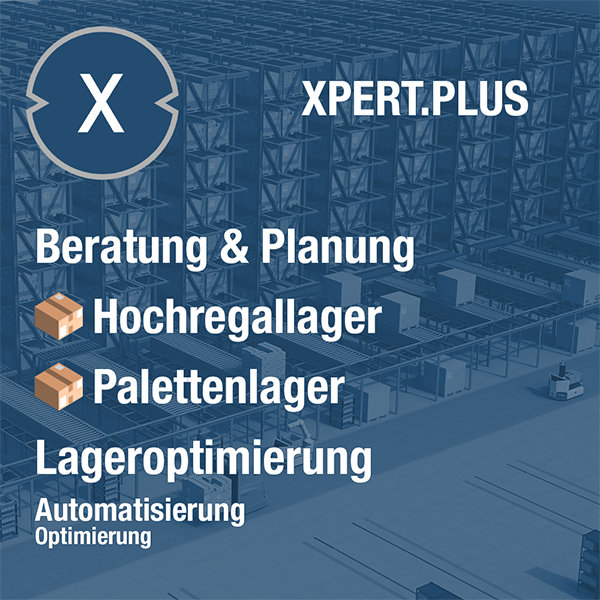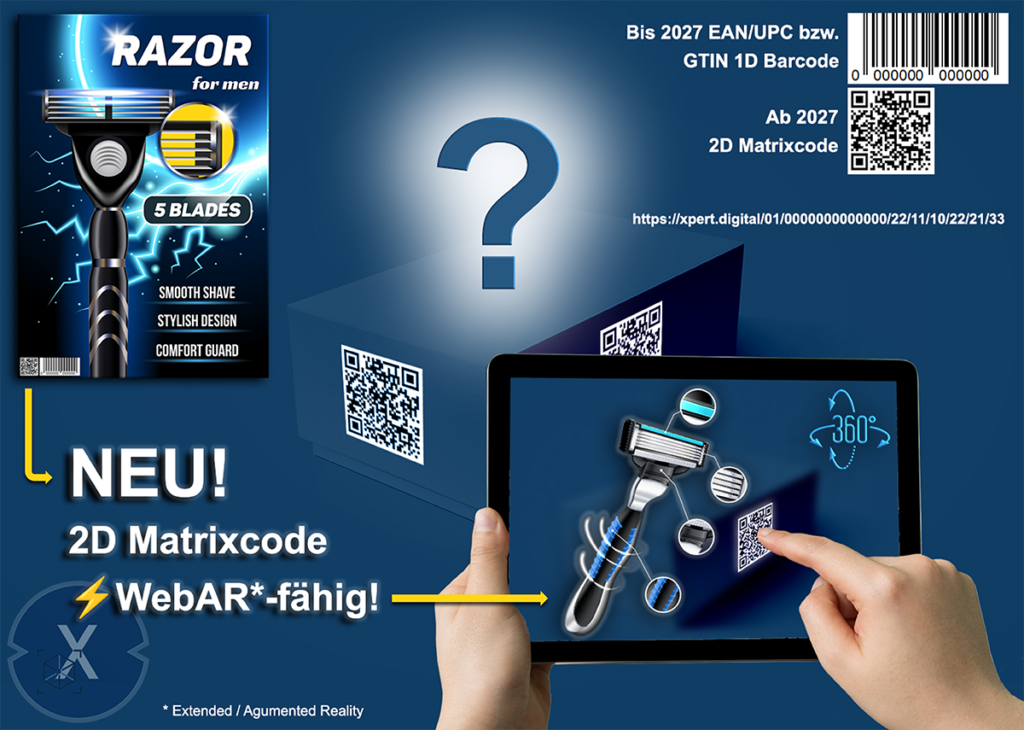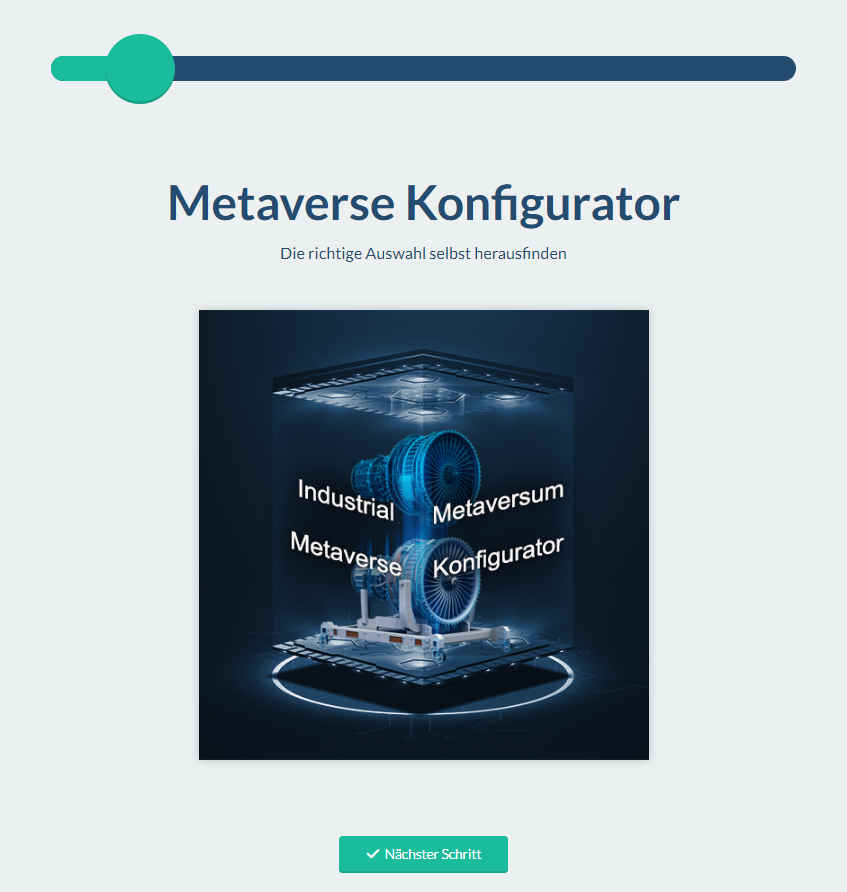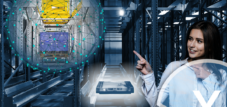The future of transport: Automated Guided Vehicles (AGVs) and the 2D matrix code for manufacturers and companies
Language selection 📢
Published on: June 18, 2023 / update from: June 21, 2023 - Author: Konrad Wolfenstein

Automated guided vehicle systems (AGVs) are revolutionizing logistics: 2D matrix code and metaverse in focus – Image: Xpert.Digital
Efficient transport is changing: Automated guided vehicle systems (AGVs) and 2D matrix code are revolutionizing manufacturers and companies
The transport industry is facing a revolutionary change due to the increasing spread of driverless transport systems (AGVs) and the use of 2D matrix code. These advanced technologies promise a more efficient and future-oriented form of transport.
Automated guided vehicle systems (AGVs) offer numerous advantages for manufacturers and companies. By using autonomous vehicles, transportation processes can be optimized as they work continuously and minimize human errors. These AGVs are equipped with advanced navigation systems, sensors and artificial intelligence to detect obstacles and find the best path to the destination. They improve efficiency, reduce costs and enable more flexible use of existing space.
The 2D matrix code complements AGV technology by enabling clear identification and tracking of products and goods. Companies can use 2D matrix code to store important information such as production dates, storage locations, delivery details and other relevant data. This increases transparency in the supply chain and improves efficiency in inventory management.
The combination of driverless transport systems and the 2D matrix code opens up new opportunities for manufacturers and companies. It enables seamless integration of production and logistics processes, improves the accuracy and efficiency of transportation, and facilitates product traceability. In addition, companies can use these technologies to improve operational performance, reduce costs and increase customer satisfaction.
The future of transport lies in the combination of driverless transport systems and the 2D matrix code. Manufacturers and companies should embrace these advanced solutions to stay competitive and take advantage of the opportunities in the evolving transportation industry. It is time to recognize the potential of these technologies and integrate their implementation into business strategy to optimize transportation processes and drive growth.

Xpert.Plus warehouse optimization - high-bay warehouses such as pallet warehouses consulting and planning
2D matrix code (from 2027 successor to the EAN/UPC or GTIN 1D barcode)
More about it here:
Automated guided vehicle systems (AGVs) for manufacturers and companies
The future of transportation will be significantly shaped by automated guided vehicle systems (AGVs) for manufacturers and companies. These innovative technologies promise a revolution in the way goods and products are transported within companies.
AGVs offer a variety of benefits for manufacturers and companies. By using autonomous vehicles, they can optimize the transportation process and ensure efficient use of their resources. Since AGVs work without human drivers, the risks associated with human errors and work breaks are eliminated. This increases productivity and shortens throughput times.
In addition, AGVs offer a high level of flexibility in adapting to different environments and tasks. They can be easily deployed in production halls, warehouses or distribution centers and are able to move in tight spaces and manage complex routes efficiently. This enables manufacturers and companies to optimally design their transport process and minimize bottlenecks.
Another important aspect is security. AGVs are equipped with advanced safety systems to avoid collisions with obstacles or other vehicles. This reduces the risk of accidents while protecting employees and assets.
The integration of AGVs into the transport processes of manufacturers and companies opens up a number of possibilities for increasing efficiency and optimizing costs. Using AGVs can reduce personnel costs as no human drivers are required. AGVs can also optimize the use of machines and systems by automatically interacting with them and improving material flow.
There are already a number of renowned manufacturers that offer AGVs for manufacturers and companies. Well-known providers include companies such as KUKA, Dematic, Swisslog, Daifuku Co., Ltd. and Aethon Inc. These companies offer customized solutions tailored to customers' specific needs.
The future of transportation undoubtedly lies in the increased use of driverless transport systems by manufacturers and companies. These technologies offer the opportunity to optimize transport processes, increase productivity and reduce costs. It is important that manufacturers and companies recognize the potential of these technologies and integrate their implementation into their business strategy in order to be successful in the competitive environment and prepare for the future.
Our Industrial Metaverse configurator
Just try out our universally applicable (B2B/Business/Industrial) Metaverse configurator for all CAD / 3D demo options:
Xpert (B2B/Business/Industrial) Metaverse configurator for all CAD / 3D data can be used on all devices, one platform!
Suitable for:
10 application examples for the use of driverless transport systems
Warehouse logistics
Automated guided vehicles can be used in warehouses to transport goods and materials between shelves, picking stations and shipping areas.
Production lines
AGVs can ensure the smooth flow of materials in production facilities by transporting parts and components to the various production stations.
Hospital logistics
In hospitals, driverless transport systems can transport medical supplies such as medications, laboratory materials and sterile instruments to different departments or patient rooms.
Airport logistics
Automated guided vehicles can be used in airports to transport luggage between terminals, baggage handling systems and aircraft.
E-commerce and retail logistics
AGVs can be used in large warehouses and distribution centers to assemble orders and prepare them for shipping.
Automotive industry
In automotive production, driverless transport systems can transport components and components to assembly lines and support the flow of materials between different production areas.
Agriculture
AGVs can be used on farms to transport crops, feed or other agricultural products.
Hospital and nursing facilities
In nursing homes and hospitals, driverless transport systems can transport meals, laundry, cleaning products and other supplies.
Logistics centers
In large logistics centers and distribution centers, driverless transport systems can transport goods and goods between different areas such as incoming goods, storage and outgoing goods.
Industrial assembly
Automated guided vehicles can be used in industrial assembly to bring components to assembly lines and transport finished products to packaging or shipping areas.
➡️ These application examples show how diverse the use of driverless transport systems can be in different industries and areas. The flexibility and efficiency of these systems make them an attractive solution for modern transportation needs.
📦 Warehouse and logistics advice for warehouse optimization and planning - for logistics managers and warehouse managers
Do you need competent support in implementing your requirements? Do you have questions about Smart Factory, Smart Logistics or digitalization?
🏬 Warehouse optimization and automation for industry, production and trade
The automation of warehouses and supply chains is an essential element of warehouse optimization. We support you in this.
🛒 E-commerce storage solutions for returns, fast shipping (same day delivery) and error-free picking
E-commerce has special requirements and competition is becoming ever stronger. It is not for nothing that e-commerce is considered the driver of changes in the market. With our digital know-how, innovative solutions and implementations are our strength.
New sensor technology for driverless transport systems (AGVs)
With the impending replacement of the old 1D barcode by the advanced 2D matrix code in 2027, there will also be changes in sensor technology for automated guided vehicle systems (AGVs). This change requires the existing sensor technology to be replaced in order to meet the new requirements.
The previous 1D barcode has successfully contributed to the identification and tracking of products for many years. However, it reaches its limits when it comes to storing large amounts of data and the advanced information required in today's logistics industry.
The 2D matrix code offers an innovative solution to address these challenges. With its two dimensions, it enables the storage of extensive information in a compact form. The code consists of a matrix of squares or dots that can contain various data such as production dates, serial numbers, expiration dates and other relevant information.
The sensor technology for AGVs must be adapted accordingly in order to be able to record and process the new 2D matrix code. Modern camera sensors are needed that are able to capture high-resolution images in real time and scan the code precisely. In addition, advanced image processing algorithms are required to extract the data from the 2D matrix code and make it usable for further processing in the AGV.
Replacing the sensor technology enables reliable capture and decoding of the 2D matrix code. This, in turn, improves the accuracy and efficiency of product identification by automated guided vehicle systems. In addition, the 2D matrix code opens up new possibilities for traceability, optimization of the supply chain and improved communication throughout the entire process.
The upcoming change from 1D barcodes to 2D matrix codes and the corresponding adaptation of sensor technology in driverless transport systems requires timely planning and implementation. Manufacturers and companies along the supply chain should take the necessary measures to ensure that their AGVs are equipped with the new sensors and can easily capture the 2D matrix code.
The changes in sensor technology for AGVs are an important step in meeting the current requirements of the logistics industry. The 2D matrix code offers expanded possibilities for data storage and processing, which leads to increased efficiency and improvement of processes. Companies should actively follow this development and adapt their driverless transport systems to the new requirements in a timely manner in order to fully exploit the advantages of the 2D matrix code.
Metaverse and 2D matrix code, 2 innovations that bring new market opportunities in the area of sales and marketing for manufacturers and companies of driverless transport systems (AGVs).

Automated Guided Vehicles (AGVs): Experience the future of logistics at trade fairs, hybrid trade fairs and events in the Metaverse – Image: Xpert.Digital
The emergence of the Metaverse and the introduction of 2D matrix code bring with it two exciting innovations in sales and marketing for manufacturers and companies of automated guided vehicle systems (AGVs). These developments open up new market opportunities and enable an innovative approach to sales and marketing.
The Metaverse, a virtual and augmented reality environment, provides an interactive platform where companies can showcase their AGVs and engage potential customers. Through immersive experiences and virtual product presentations, manufacturers and companies can demonstrate the full potential of their driverless transportation systems. Customers can experience the AGVs in action, test functions and learn about their benefits without having to be physically there. The Metaverse enables effective communication and interaction between manufacturers, businesses and customers, resulting in improved sales performance and increased customer experience.
The introduction of the 2D matrix code as a new marking technology offers further advantages for sales and marketing. With the 2D matrix code, manufacturers and companies can store extensive product information directly on the product itself. Customers can scan this information using smartphones or special readers and access important details such as product specifications, instructions, proof of origin and much more. The 2D matrix code enables improved communication and transparency along the entire value chain and strengthens customer trust in the product and the brand.
These two innovations open up numerous market opportunities for manufacturers and companies of driverless transport systems. By integrating the Metaverse into their sales strategy, they can expand their reach and engage customers on a global scale, regardless of geographic location. The Metaverse enables innovative presentation and interaction with the AGVs, resulting in higher customer loyalty and improved purchasing decisions.
The use of 2D matrix code offers companies the opportunity to offer their customers additional information and added value. The detailed product information that can be accessed via the code allows customers to make informed decisions and increase confidence in the quality and safety of automated guided vehicle systems.
In order to effectively use the new market opportunities, manufacturers and companies should adapt their sales and marketing strategies to the changes. The integration of the Metaverse into the online presence and the development of virtual showrooms enables.
10 manufacturers of automated guided vehicle systems (AGVs)
Please note that the market and manufacturer availability may change over time.
Daifuku Co., Ltd.
Daifuku is an international provider of logistics solutions, including AGVs. Your vehicles are able to transport goods automatically and offer a flexible and efficient solution for internal logistics.
Swisslog AG
Swisslog offers innovative AGV solutions for the logistics industry. Their vehicles are designed for use in various environments such as warehouses, manufacturing plants and hospitals.
KION Group AG
The KION Group is a leading global provider of AGVs. Their portfolio includes various types of vehicles used in intralogistics, including forklifts, tractors and stacker cranes.
Dematic GmbH
Dematic offers a wide range of AGV solutions for automating warehouse and logistics processes. Your vehicles are equipped with the latest sensor technology and navigation systems.
EK Automation GmbH
EK Automation develops tailor-made AGV solutions for various industries. Your portfolio also includes intelligent software solutions for controlling and monitoring vehicles.
AGVE Group AB
AGVE Group is an experienced manufacturer of AGVs for material handling in the automotive industry, food production and other industries. Your vehicles are characterized by high precision and reliability.
JBT Corporation
JBT develops and produces innovative AGV solutions for use in various industries including airports, food processing and industrial. Your vehicles offer a reliable and precise transport solution.
Grenzbach Maschinenbau GmbH
Grenzbach specializes in automated transport systems, including AGVs. Their vehicles can be used in a variety of applications, from automotive to glass processing.
KUKA AG
KUKA is a leading global provider of robotics and automation solutions. They also offer AGV solutions for the internal transport of goods and materials.
Oceaneering AGV Systems
Oceaneering develops AGVs for demanding environments such as offshore and industrial facilities. Their vehicles are robust, reliable and equipped with the latest technology.
The future prospects for automated guided vehicle systems (AGVs)

The future of logistics: Automated guided vehicle systems (AGVs) are on the rise for optimized efficiency and productivity - Image: Xpert.Digital
The future prospects for automated guided vehicle systems (AGVs) are extremely promising. Technological advances in robotics, artificial intelligence and automation have led to continuous improvement of AGV technology and expanded its application possibilities. Here are some reasons why FTS's future prospects are positive:
Increased efficiency
AGVs enable automated and efficient execution of transport tasks. You can optimize material flow, reduce idle time and increase productivity.
Cost savings
By using AGVs, companies can reduce their operating costs. The automated systems work around the clock without human intervention, resulting in lower personnel costs.
Security
AGVs are equipped with advanced safety features to prevent accidents and injuries. They use sensors and cameras to avoid obstacles and safely interact with their surroundings.
flexibility
AGVs can be adapted to different work environments and requirements. They can be used both indoors such as warehouses and outdoors and are capable of transporting different types of loads.
Scalability
AGV systems are able to adapt to changing requirements and scale with company growth. Companies can expand their AGV fleet to handle increasing transport volumes.
Reduction of errors
By automating the transport process, AGVs minimize sources of human error. This results in greater accuracy and reliability when performing transportation tasks.
Integration with other technologies
AGVs can be seamlessly connected to other technologies such as warehouse management systems, artificial intelligence and Internet of Things (IoT). This creates an intelligent and networked logistics environment.
sustainability
AGVs can help reduce companies’ environmental footprint. Through optimized route planning and the use of electrically powered vehicles, emissions and energy consumption can be reduced.
➡️ Based on these factors, the demand for AGVs is expected to continue increasing across various industries including logistics, manufacturing, retail and healthcare. The continued development of AGV technology will lead to even more advanced and powerful systems, offering even greater efficiency and productivity.
That's why Xpert.Plus for your warehouse and logistics consulting: warehouse optimization for automated guided vehicle systems (AGVs) with Industry 4.0 - IoT technology
Xpert.Plus is a project from Xpert.Digital. We have many years of experience in supporting and advising on storage solutions and in warehouse optimization , which we bundle in a large network Xpert.Plus
I would be happy to serve as your personal advisor.
You can contact me by filling out the contact form below or simply call me on +49 89 89 674 804 (Munich) .
I'm looking forward to our joint project.
Xpert.Digital – Konrad Wolfenstein
Xpert.Digital is a hub for industry with a focus on digitalization, mechanical engineering, logistics/intralogistics and photovoltaics.
With our 360° business development solution, we support well-known companies from new business to after sales.
Market intelligence, smarketing, marketing automation, content development, PR, mail campaigns, personalized social media and lead nurturing are part of our digital tools.
You can find out more at: www.xpert.digital – www.xpert.solar – www.xpert.plus
































